Case Studies.
Add Case Study
Our Case Study database tracks 22,657 case studies in the global enterprise technology ecosystem.
Filters allow you to explore case studies quickly and efficiently.
Download Excel
Filters
-
(6,653)
- (2,601)
- (2,127)
- (945)
- View all
-
(5,642)
- (2,469)
- (1,692)
- (826)
- View all
-
(5,571)
- (2,178)
- (1,766)
- (643)
- View all
-
(5,247)
- (2,179)
- (1,715)
- (1,321)
- View all
-
(2,881)
- (1,448)
- (574)
- (376)
- View all
- View all 15 Technologies
- (1,985)
- (1,985)
- (1,915)
- (1,679)
- (1,629)
- View all 42 Industries
- (8,728)
- (4,742)
- (3,618)
- (3,233)
- (2,947)
- View all 13 Functional Areas
- (3,304)
- (2,787)
- (2,603)
- (2,006)
- (1,630)
- View all 129 Use Cases
- (13,581)
- (5,296)
- (4,272)
- (3,520)
- (2,856)
- View all 9 Services
- (504)
- (432)
- (416)
- (382)
- (301)
- View all 1083 Suppliers
Selected Filters
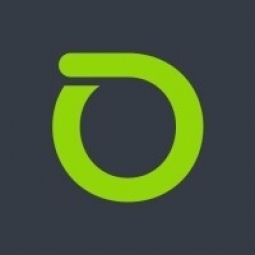
|
Assuring High-Speed Availability to Government Resources During COVID-19
The government agency was facing a significant increase in network bandwidth consumption due to the sudden shift to remote work amid the COVID-19 pandemic. This was putting a strain on their existing VPN capacity and Internet bandwidth. In addition to this, the agency was also tasked with supporting a new temporary unemployment program designed to provide financial assistance to residents who had lost their jobs due to the pandemic. The launch of a new dedicated website for accessing these benefits was expected to further tax the agency's already strained Internet resources. The agency's IT team lacked the necessary visibility to determine how the additional VPN and Internet capacity was performing.
|
|
|

|
Achieving Successful Cloud Migrations With NETSCOUT
The bank was running some of their customer-facing and back office applications in a mainframe environment. However, the increasing operating expenses involved with this approach were becoming too high to ignore. The bank decided to refactor existing applications from the mainframe and migrate them to an on-premises, virtualized, data center environment. This process involved Webtiered, middleware, and multi-tier technologies that would function as production staging to monitor and stabilize these apps prior to an eventual cloud migration. During this process, the Network Operations team hit a roadblock: there were visibility issues into performance of existing mainframe applications that their open source and vendor app monitoring tools could not troubleshoot.
|
|
|

|
Consolidating Financial Data Center Operations, Addressing Remote Workforce Transitions With Smart Visibility
The financial group was undergoing a long-term data center transformation, network upgrade, Cisco ACI, and mobile application rollout. The near-term transition to a remote workforce was taxing VPN and VDI environments, with a bandwidth upgrade only leading to latency. The IT team was tasked with consolidating several production-level Data Centers to two on-premises corporate locations, upgrading to a Cisco® Application Centric Infrastructure (ACI) software-defined networking (SDN) architecture and 40G network speeds, and deploying a new mobile application.
|
|
|

|
Leading U.S. Bank Assures User Experience and VPN Performance During Critical Times
The bank faced a significant challenge when the COVID-19 pandemic prompted management to instruct employees to work from home. This led to an unprecedented use of the bank's virtual private network (VPN), posing visibility and monitoring challenges for the IT team. As more employees and clients began to rely on digital platforms for their financial transactions, the bank's IT team had to ensure consistent, high-quality service delivery. The bank's financial livelihood became even more linked to its ability to successfully process online banking, bill-pay services, and other financial transactions that were now critically important for clients in financial need.
|
|
|

|
Leading Financial Ensures Quality Experience for Users of Virtual Desktop Infrastructure Over VPNs
The bank’s IT team had long monitored overall performance of their virtual private network (VPN). The VPN represented a significant element of the IT delivery infrastructure – at times, nearly half of the bank’s employees used the remote network to conduct business from their home offices or mobile devices. Also accessing these same services were several thousand authorized, strategic partners and contractors, placing additional volume on this environment. For the IT team, VPN performance management was not as straightforward as assuring adequate bandwidth coverage was in place. The VPN also supported a virtual desktop infrastructure (VDI) based on Citrix technology that was showing performance strains based on increased users. Remote users reported regularly experiencing frozen virtual desktop screens and timeouts, with associated issues summarized in the trouble tickets forwarded to the Help Desk.
|
|
|

|
Global Contact Center Stops Dropped Calls with nGeniusONE
The company's call center agents began experiencing issues with dropped voice calls, resulting in customer service exchanges being interrupted before completion. Regardless of call status, telephone call lengths were varying from agent to agent, with customer exchanges abruptly dropping after 30 minutes. In addition to dealing with customer service issues and frustrated call center agents unable to perform their duties as a result of the dropped calls, the company was unable to consistently meet negotiated Service Level Agreement thresholds regarding voice performance for the companies they were contracted to serve. Existing third-party tools being employed by the IT team were unable to view the call flow architecture in a manner required for successful troubleshooting.
|
|
|

|
Nykaa - Handling 1.6 Million Unique Conversations in Just the First 30 Days of Using Verloop.io
Nykaa, a beauty and fashion startup, was facing challenges in handling customer support. The company was using emails and query forms to follow up with customers during conflict resolution. This process was time-consuming and inefficient, with customer service executives spending over 32,000 staff hours a month answering and replying to support queries. Nykaa wanted to automate parts of customer support that were automatable, to free up time to focus on other important aspects of customer experience.
|
|
|

|
MediBuddy Increased Its CSAT To Over 90% After Moving To Verloop.Io's Chatbot
MediBuddy, a healthcare service provider, was struggling to manage the influx of customer queries across various service verticals such as health checkups, medicines, consultations, lab tests, dental care, hospitalization, and genome studies. The company was relying on traditional communication channels like email and phone calls, and a team of over 250 service representatives. However, the team was unable to handle the volume of queries, especially the 800+ concurrent questions in real-time. The challenge was to automate the customer service process without compromising on customer satisfaction.
|
|
|
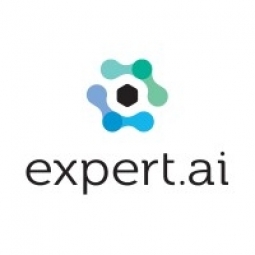
|
Accelerating Media Categorization via IPTC Taxonomy at Ansa
Ansa, a leading press agency, was struggling with the heavy volume of news and the speed at which information circulates. Accurate and timely content sorting and categorization were of the utmost importance. The only way to keep up with current events and satisfy the needs of internal organizations was to have a classification system that is fast, uniform, complete and accurate (according to IPTC international standards). Ansa wanted a tool to improve information management, enabling them to better archive daily news and enhance the image search in their online database.
|
|
|

|
Community College of Denver Enrolling in Digital Engagement for Efficiency and Better Service
Community College of Denver (CCD) faced a significant increase in enrollment, which put a strain on their existing systems and programs. The administrative functions, particularly the Call Center, faced unprecedented pressure. The college needed a technology solution that would enable the Call Center to handle a higher volume of support calls without increasing resources. They realized that live chat could bring the economies of scale they were looking for. They also needed to improve their website architecture to improve students’ ability to self-serve.
|
|
|

|
Beau-coup Success Story
Beau-coup, a leader in the online favors and gifts industry, was facing challenges with its customer service. The company prides itself on offering exceptional customer service, but technical issues with their previous chat provider were causing interruptions and a frustrating experience for both customers and service reps. The company was dropping a lot of chats due to connection issues, and they were missing 20 to 30 chats a day. They also lacked information about how their customers came to their site, what search terms they used, and if the resulting chat was proactive or reactive. There was no method to the madness in how their chat invitations were fired, and they experienced very poor acceptance rates as a result.
|
|
|

|
Lifeline Australia: Providing Help and Resources to People in Crisis
Lifeline Australia, a crisis counseling and referral service, wanted to add a live chat channel to its phone counseling services to reach a younger demographic that is less comfortable with calling in by phone. The organization initially tried a rudimentary live chat solution and an internally-developed application, but found these solutions lacking in several ways. The offshore service had slow connectivity and full-time support was difficult to obtain. The in-house system was not built with the right technology skills and had mistakes in the underlying architecture of the platform.
|
|
|

|
Engaging with Live Chat to Deliver Compassion and Hope
SAHAR, a nonprofit organization based in Israel, was facing the challenge of enabling real-time digital engagement with distressed individuals. They needed to offer mobile chat and leverage data insights to improve chat and information effectiveness. The organization was seeking to connect its network of approximately 100 volunteers with those seeking assistance, and they were conducting approximately 1,000 live chat sessions each month. They needed to add mobile live chat, which was becoming increasingly important for their Arabic-speaking audience who primarily used mobile devices.
|
|
|

|
Michigan Legal Help Program Assisting Citizens with Legal Matters with Digital Engagement
The Michigan Legal Help Program was established to provide legal information for citizens who find themselves in the civil court system without a lawyer. The program offers a variety of resources, including informational content, referrals to legal services organizations, and automated online legal forms and documents. However, the complexity of these resources and the variables in people’s situations often led to questions and difficulties in navigation. The five-person staff of the Michigan Legal Help Program did not have the capacity to field inquiries from the public. The organization needed a cost-effective channel to answer legal information questions, help visitors navigate the tools available, and ensure that volunteer agents could log into the platform from anywhere.
|
|
|

|
The Sun Shines for Sunweb Holidays as Personalised Content Drives Online Conversions and Sales
Sunweb Holidays, a popular travel holiday company, was facing challenges in the increasingly competitive online travel industry. The cost of targeting customers had risen significantly, with 50% of the company's marketing budget being spent on Google Ad Words alone, which was not driving the required return on investment. The company also suffered from limited IT agility, with a small local team only able to control the site content via a Content Management System that offered limited personalisation and reporting capabilities. Sunweb Holidays wanted to capitalise on the growing number of visitors to its website and convert them into sales, rather than just focusing on driving traffic to the website.
|
|
|

|
Engaging with Students to Build an Affordable Education
StraighterLine, a provider of self-paced college courses, was looking for a way to engage with students and prospective students in a familiar channel. They wanted to provide engagement options for mobile users and improve conversion and customer satisfaction rates. The company had a live chat solution from LivePerson, but it was not being used to its full potential. They were completing around 100 chat conversations per month, with inquiries fielded on an ad-hoc basis by members of the telephone call center team. They realized they were missing substantial opportunities and needed to optimize their live chat.
|
|
|

|
The Rubber Meets the Road with Live Engagement and Predictive Intelligent Targeting
Discount Tire Direct, a subsidiary of Discount Tire Company, was facing challenges in delivering an outstanding digital customer experience and increasing e-commerce conversion rates. The company wanted to maintain high in-store customer satisfaction rates via digital channels. They had experimented with an on-premise live chat solution when they initially added e-commerce to their website in 2003, but it was simply a passive button called Click to Talk and was soon removed. In late 2011, they decided to revisit the use of live chat deployment on their website to rethink how they engaged customers on their website, seeking to make it the best buying experience possible for their customers.
|
|
|

|
David’s Bridal uses Conversational Commerce to help customers plan the event of their dreams with ease
David’s Bridal, an international wedding dress destination, was facing a unique challenge. When shopping for wedding dresses, 50% of brides were calling stores to book appointments. If the stores were closed or sales agents couldn’t get to the phone in time, they were losing business. Agents sometimes had to step away from the brides they were helping to answer the phone, creating a poor experience for in-store customers. The company wanted to be available for customers 24/7 without having to add additional staff. They believed AI and automation could help and began looking at different chatbot providers.
|
|
|
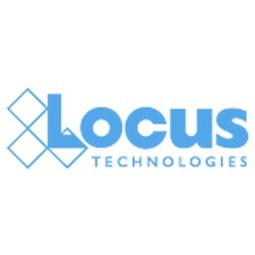
|
GPC streamlines Clean Air Act Title V record keeping using Locus Platform
Grain Processing Corporation (GPC), a leading U.S. manufacturer of corn-based products, was struggling with an inefficient system for tracking and reporting compliance parameters for the Clean Air Act Title V. They were using SharePoint to enter over 20 daily logs at two facilities, with several questions per log and per shift, throughout a two-shift day. Their system lacked reporting or notifications, and there was no consistency between the forms in the system. The EHS manager would spend weeks searching through information to obtain the data needed for GPC’s annual Title V certification report and other reporting needs.
|
|
|

|
Environmental Data Flow Six Sigma Process Improvement Savings Overview
The Environmental Data Flow Six Sigma improvement project was initiated in September 2009, driven by a cost-benefit analysis on data validation conducted earlier that year. The project aimed to improve LANL’s environmental data processing following receipt from the analytical laboratories. The project identified thirty-three process improvements, broken into seven subgroups. However, six of the improvements were never implemented, and two of the seven improvement subgroups did not lead to any cost savings but did lead to more accurate sample planning and increased transparency into the system.
|
|
|
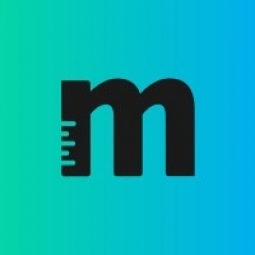
|
RXR Realty: Making sustainability part of the fabric of every business decision
RXR Realty, a leading real estate owner, investor, operator, and developer, sought to make sustainability a core part of every business decision. However, their previous ESG (environmental, social, governance) solution was insufficient to keep internal and external stakeholders informed of its portfolio’s ESG performance or track progress toward any of its sustainability goals. The legacy process involved a consultant collecting data annually, with no involvement for the rest of the year. RXR needed a purpose-built ESG portal that could continuously collect and track environmental data, ensure the information was complete and accurate, and provide a comprehensive view of its buildings’ ESG performance as well as highlight areas of improvement.
|
|
|

|
Nuveen Optimizes Building Performance with Fast Payback Thanks to Measurabl
Nuveen, a global real estate investment manager, was looking for ways to further optimize the performance of its properties, particularly 99 High Street in Boston, which had already undergone significant efficiency improvements. The challenge was to find a solution that could provide real-time performance monitoring and optimization without requiring a large upfront investment. The solution also needed to be able to centralize data and provide actionable insights for further improvements. The onset of the COVID-19 pandemic further emphasized the need for such a solution, as it led to an increased focus on ESG performance from both tenants and investors.
|
|
|
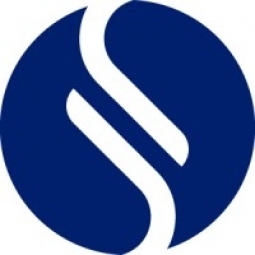
|
Anadarko Raises Deepwater Drilling Hazard Assessments to Ensure SEMS Compliance, Enable Sustainable Growth
Anadarko Petroleum Corporation, one of the world's largest independent oil and natural gas exploration and production companies, was faced with the challenge of complying with new U.S. regulatory requirements to support Safety and Environmental Management System (SEMS). The company needed to streamline its drilling permit application process and simplify the management of change. Additionally, Anadarko was faced with the challenge of minimizing operational disruption and delays due to the replacement of experienced staff. The company was deeply affected by the tragic Deepwater Horizon events in 2010, which led to a six-month moratorium on deepwater drilling operations across the Gulf of Mexico and the mandatory adoption of SEMS by federal authorities.
|
|
|

|
Oil & Gas Industry Excellence Award Winner - Chevron
Chevron, a global energy company, has been committed to managing greenhouse gases (GHGs) in its operations. With the proliferation of GHG regulations worldwide, timely and accurate emissions reporting has become essential for the company. Many new GHG protocols include cap-and-trade or carbon pricing requirements, making GHG emissions data financially significant and subject to stringent standards associated with accounting and third-party auditing. Chevron, with its 55 business units and 10,000 sites worldwide, required a standardized system for tracking and reporting GHG emissions data.
|
|
|

|
Oil & Gas Industry Excellence Award Winner - CITGO
CITGO, a multi-faceted refiner and marketer of transportation fuels, lubricants, petrochemicals and other petroleum-based products, is dedicated to the safety and health of its employees and the protection of the environment across its operations. The company is subject to numerous local, state and federal environmental and safety regulations from agencies like the Occupational Safety and Health Administration (OSHA), and the Environmental Protection Agency (EPA). CITGO continually analyzes, maintains, and improves its business processes to address compliance issues across the corporation. The company was looking for tools that would further strengthen its work processes and enhance performance. CITGO’s most recent project has been the design of an innovative Management of Change process powered by the IMPACT.
|
|
|

|
Chemical Industry Excellence Award Winner - Lanxess
LANXESS Corporation’s Health, Safety, Environment and Quality (HSEQ) group supports global efforts to meet the highest safety standards covering more than 20,000 products in 52 production sites. The Pittsburgh HSEQ group is responsible for keeping all safety data sheets (SDS) current and compliant for 4,000 products in the United States, as well as for a few thousand more products produced in Canada and distributed in Mexico. They work together with other HSEQ groups in the EU, Brazil, China and Japan to author GHS compliant Safety Data Sheets in 39 different languages for destination countries around the world. The United States Occupational Safety & Health Administration (OSHA) has mandated that companies implement the Globally Harmonized System of Classification and Labelling of Chemicals (GHS).
|
|
|

|
Life Sciences Industry Excellence Award Winner - Siemens
Siemens, a global Fortune 500 company, faced a major business challenge due to the confluence of two major regulatory changes becoming effective on the same date. The U.S. OSHA adoption of the United Nations Globally Harmonized System of Classification and Labeling of Chemicals (GHS) framework as its standard for hazard communication combined with the enforcement of the EU GHS regulation on mixtures meant Siemens had to reassess and reclassify over thirty-five hundred products by the June 1, 2015 regulatory deadline. Non-compliance would have created an extreme business disruption since Siemens would have been unable to sell its products in several markets. The GHS implementation project formally began in 2014 and leveraged software, content and expertise from Sphera to help them facilitate the transition.
|
|
|

|
Enterprise-wide visibility at BASF
BASF, the world’s largest chemical producer, was using decentralized tools like Word and Excel to document process hazards. As a result, documentation was inconsistent and data extraction was cumbersome. Gathering strategic insights required experienced staff to review long, 300-page reports. The company had limited visibility of risk across the global organization, which was a significant challenge.
|
|
|

|
Mahindra’s Decarbonization Pathway using the Science Based Targets (SBTs)
Mahindra & Mahindra Ltd. (M&M Ltd. or Mahindra), a mobility products and farm solutions provider, is the flagship company of the Mahindra Group, an Indian multinational federation of companies operating in over 100 countries around the globe with a presence in multiple industries. In order to take action on combating climate-related risk and contribute to the ambitious emissions reduction target set by the Group, M&M Ltd. decided to set a robust Science Based Target (SBT) in line with the climate goal from the Paris Agreement. During the target development process the company assessed and set science-based greenhouse gas (GHG) reduction targets, considering their direct (scope 1) and indirect (scope 2 & 3) emissions. Mahindra evaluated their emissions based on the Science Based Target Initiative (SBTi) methodology, using primary collected data and data from Sphera’s LCA databases GaBi, to get robust insights for their entire value chain.
|
|
|

|
Sustainability at Lumileds
Lumileds, a company committed to a culture of quality, responsibility, and sustainability, was facing a challenge. Their custom-built, end-of-life software for the monthly data collection for health & safety and quarterly data collection for environmental data was no longer adequate. They needed to replace it with a state-of-the-art sustainability solution to track, monitor, and report against their sustainability targets. The new solution needed to be easy-to-use and intuitive for data collectors and data admins. Furthermore, the implementation had to be completed before the next reporting window.
|
|




